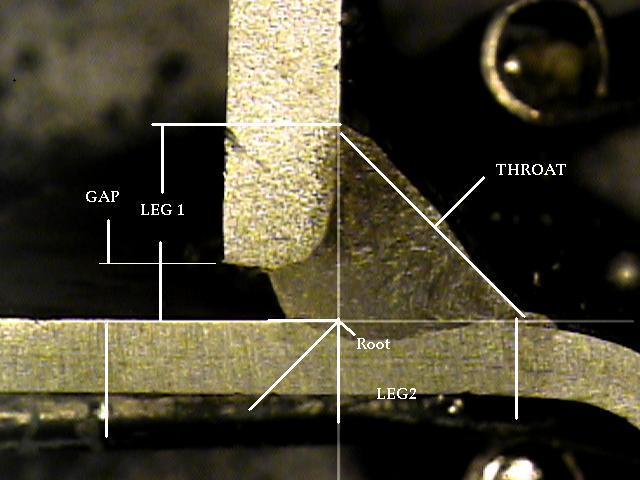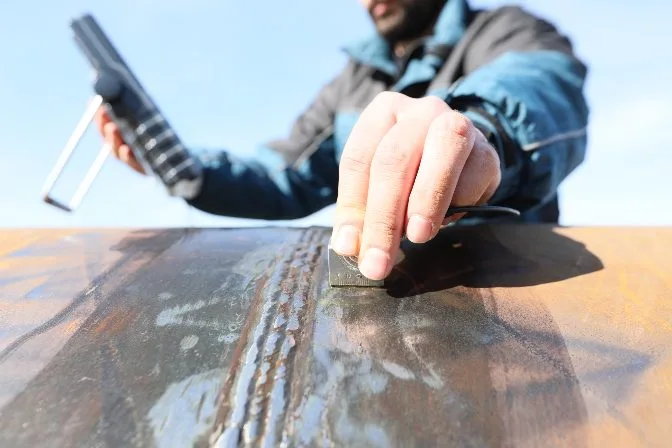Top Advantages of Hiring Welding Inspection Milwaukee for Your Next Work
Recognizing the Value of Welding Inspection in Ensuring Structural Honesty and Safety And Security Across Numerous Industries
Welding assessment is an indispensable procedure that safeguards architectural stability and safety and security throughout varied markets. By diligently assessing weld top quality, inspectors help avoid problems that could result in devastating failures. This organized analysis not just enhances conformity with industry standards but additionally plays an essential duty in protecting properties and making sure public security. The effects of overlooking appropriate inspection practices are profound, typically resulting in significant financial and human costs. As we check out the details of welding examination, the inquiry develops: what are one of the most critical variables that contribute to reliable examination procedures?
Role of Welding Examination
While the stability of welded frameworks is critical to security and performance, the function of welding inspection can not be overstated. Welding evaluation acts as a crucial quality assurance procedure that ensures the adherence to developed standards and requirements throughout the welding procedure. By systematically evaluating welds for defects, incongruities, and non-compliance, inspectors play an essential role in protecting the integrity of structures throughout numerous markets.
Welding assessments include a series of tasks, from pre-weld assessments to post-weld analyses. These evaluations not only identify potential issues prior to they rise however likewise boost the overall reliability and life-span of welded components. Welding Inspection Milwaukee. Evaluations help to confirm the ability and proficiencies of welders, ensuring that welding treatments are implemented correctly and materials work
In addition, a rigorous evaluation protocol fosters conformity with governing needs and market requirements, lessening the threat of catastrophic failures. By advertising a culture of safety and accountability, welding inspection contributes significantly to both operational and economic efficiencies. Altogether, the function of welding inspection is crucial, as it underpins the high quality, safety and security, and longevity of welded frameworks important to contemporary infrastructure and market.
Kinds Of Welding Assessments
Recognizing the different kinds of welding inspections is essential for maintaining the top quality and safety and security of welded structures. Welding assessments can be categorized right into several kinds, each serving a certain objective in the evaluation procedure.
Aesthetic examination is one of the most fundamental type, including a mindful assessment of the welds with the naked eye or with magnification. This approach assists identify surface issues such as cracks, insufficient fusion, or extreme spatter.
Next is non-destructive screening (NDT), that includes strategies such as ultrasonic screening, radiographic screening, and magnetic bit screening. These techniques permit assessors to analyze the honesty of welds without jeopardizing the product's structure. Ultrasonic screening utilizes high-frequency audio waves to discover inner problems, while radiographic testing utilizes X-rays or gamma rays to visualize internal weld features. Magnetic particle testing, on the various other hand, is effective for detecting surface and near-surface gaps in ferromagnetic products.
Damaging testing, though less usual, includes physically checking samples to recognize the weld's mechanical buildings. Each type of examination adds to a thorough analysis, guaranteeing that welding satisfies sector requirements and safety and security demands.
Industry Requirements and Rules
Establishing sector criteria and guidelines is essential for making sure the safety and security and reliability of bonded structures. These standards serve as benchmarks for security, efficiency, and quality, leading manufacturers and inspectors in the implementation of welding procedures. Various organizations, such as the American Welding Society (AWS) and the International Organization for Standardization (ISO), have established detailed criteria that dictate treatments for welding methods, check out this site qualification of welders, and evaluation strategies.
Conformity with these regulations not only enhances the top quality of welds yet likewise lessens threats related to structural failings. Details codes, such as the ASME Central Heating Boiler and Pressure Vessel Code, summary requirements for the building and construction of pressure vessels, ensuring they can withstand functional tensions. In addition, national and neighborhood guidelines usually mandate adherence to these market requirements, reinforcing their significance throughout sectors like building and construction, aerospace, and automotive production.
Normal updates to these criteria reflect advancements in modern technology and welding strategies, making certain that safety and security steps continue to be appropriate. Thus, a detailed understanding and application of these standards is necessary for welding experts, promoting a culture of safety and security and top quality in bonded structures.
Effects of Poor Inspections
Inadequate evaluations can lead to severe repercussions in the welding market, undermining the very regulations and requirements made to make sure safety and security and architectural honesty. The effects of bad inspections can manifest in various kinds, from find out here now instant safety hazards to long-term structural failings.
Additionally, poor assessments can stain a business's reputation and result in lawful effects, including fines and litigation. Ultimately, the ramifications of inadequate assessments extend beyond specific tasks, influencing industry-wide standards and public understanding, therefore stressing the important demand for efficient and extensive welding examinations.
Best Practices for Effective Assessments
Effective welding assessments are vital to making sure the honesty and safety and security of bonded structures. To achieve optimum results, inspectors should follow several finest techniques that improve the inspection process.

Second of all, examiners need to have the needed certifications and qualifications relevant to the welding processes and materials being checked out. Recurring training and professional advancement are crucial to remaining upgraded on market requirements and technological advancements.
In addition, making use of suitable examination tools and techniques, such as visual evaluations, ultrasonic testing, and radiographic examinations, is essential for detecting problems that could read here endanger architectural integrity.
Last but not least, complete documentation of the assessment procedure is crucial. By executing these finest practices, companies can dramatically enhance the performance of their welding assessments and ensure safe, reputable procedures.
Final Thought

In conclusion, welding examination is vital for keeping structural honesty and safety and security across various markets. Focusing on efficient welding inspections is essential to make sure the safety and security of personnel, assets, and general operational honesty.

As we explore the ins and outs of welding inspection, the question emerges: what are the most vital aspects that add to effective assessment processes?
Welding examination serves as a critical top quality control process that makes sure the adherence to developed criteria and specifications throughout the welding operation. In amount, the duty of welding evaluation is essential, as it underpins the quality, safety and security, and longevity of bonded frameworks important to contemporary infrastructure and market.
Different companies, such as the American Welding Society (AWS) and the International Company for Standardization (ISO), have actually created detailed requirements that determine treatments for welding methods, certification of welders, and inspection strategies.
Eventually, the ramifications of poor evaluations prolong past specific tasks, influencing industry-wide standards and public assumption, thus stressing the critical requirement for efficient and rigorous welding inspections.